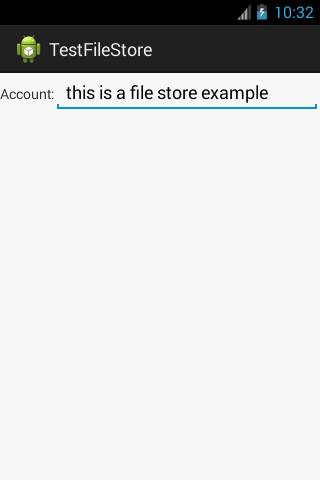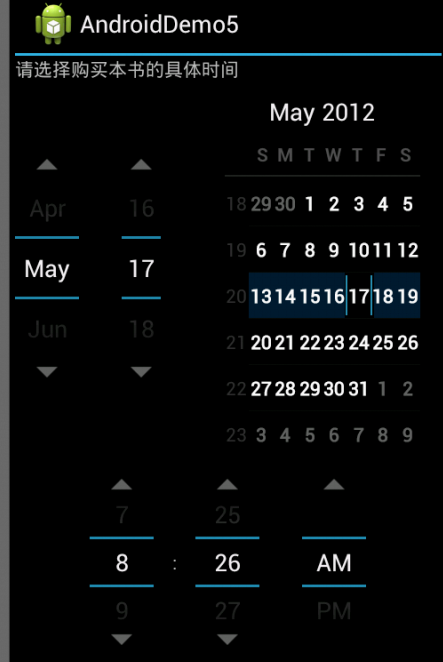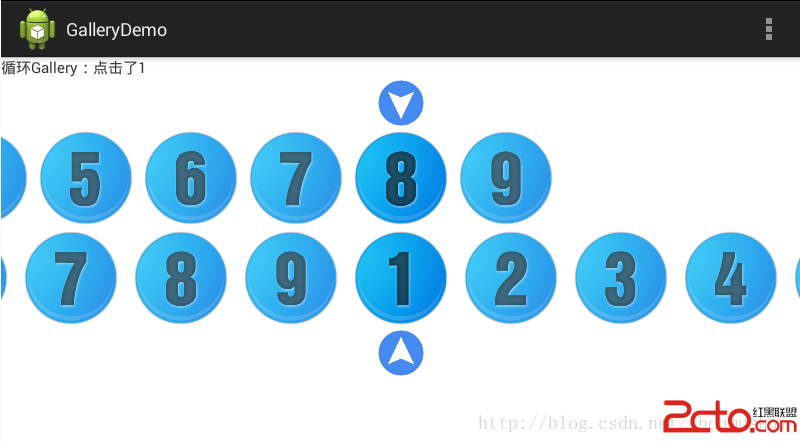編輯:關於Android編程
本文實例分析了Android持久化技術之文件的讀取與寫入操作。分享給大家供大家參考,具體如下:
1、文件存儲
(1)在Android的持久化技術中,文件存儲是最基本的一種數據存儲方式。
(2)對存儲的內容部做任何處理,原樣存儲到文件中。
(3)Context提供了文件寫入與讀取的方法,openFileOutput:寫入到文件;openFileInput:從文件中讀取。
(4)文件寫入時模式有多種:比如是覆蓋寫入還是追加寫入等。
(5)寫入的文件默認存儲在/data/data/報名/files/目錄下。
2、示例
在這裡設置一個簡單的應用場景:當在文本框中輸入內容時,當下次再進入時顯示上次輸入的內容。
(1)activity_main.xml文件
<LinearLayout xmlns:android="http://schemas.android.com/apk/res/android"
android:layout_width="fill_parent"
android:layout_height="fill_parent"
android:orientation="horizontal" >
<TextView
android:id="@+id/textView1"
android:layout_width="wrap_content"
android:layout_height="wrap_content"
android:text="Account:" />
<EditText
android:id="@+id/editText1"
android:layout_width="match_parent"
android:layout_height="wrap_content"
android:ems="10" >
</EditText>
</LinearLayout>
在該布局中,有一TextView和一輸入框。
(2)MainActivity.java
package com.example.testfilestore;
import java.io.BufferedReader;
import java.io.BufferedWriter;
import java.io.FileInputStream;
import java.io.FileNotFoundException;
import java.io.FileOutputStream;
import java.io.IOException;
import java.io.InputStreamReader;
import java.io.OutputStreamWriter;
import android.app.Activity;
import android.content.Context;
import android.os.Bundle;
import android.text.TextUtils;
import android.view.Menu;
import android.widget.EditText;
/**
* 文件存儲:寫入與讀取
* @author yy
*
*/
public class MainActivity extends Activity {
private EditText editText;
@Override
protected void onCreate(Bundle savedInstanceState) {
super.onCreate(savedInstanceState);
setContentView(R.layout.activity_main);
//獲取editText對象
editText = (EditText) findViewById(R.id.editText1);
//首先加載上次輸入的內容
String inputContent = readFromFile();
if(!TextUtils.isEmpty(inputContent)){
//如果上次輸入的內容不為空,則加載進來
editText.setText(inputContent);
//設置光標位置,使之位於文本末尾,默認是在文本頭部
editText.setSelection(inputContent.length());
}
}
/**
* 當活動銷毀時,保存輸入的內容
*/
@Override
protected void onDestroy() {
super.onDestroy();
//獲取輸入的內容
String data = editText.getText().toString();
//寫入文件
writeToFile(data);
}
/**
* 輸入的內容寫入文件
*/
public void writeToFile(String data){
FileOutputStream fileOutputStream = null;
BufferedWriter bufferedWriter = null;
try {
//Context中的方法,用於存儲數據
//第一個參數是文件名
//第二個參數是寫入模式,表示覆蓋寫入,如果原來有內容,則會覆蓋
fileOutputStream = openFileOutput("first",Context.MODE_PRIVATE);
bufferedWriter = new BufferedWriter(new OutputStreamWriter(fileOutputStream));
bufferedWriter.write(data);
} catch (FileNotFoundException e) {
e.printStackTrace();
} catch (IOException e) {
e.printStackTrace();
}finally{
//關閉流
try {
if(bufferedWriter!=null){
bufferedWriter.close();
}
} catch (IOException e) {
e.printStackTrace();
}
}
}
/**
* 從文件中讀取數據
* @return
*/
public String readFromFile(){
FileInputStream fileInputStream = null;
BufferedReader bufferedReader = null;
StringBuffer stringBuffer = new StringBuffer();
try {
fileInputStream = openFileInput("first");
bufferedReader = new BufferedReader(new InputStreamReader(fileInputStream));
String line = "";
while((line = bufferedReader.readLine())!=null){
stringBuffer.append(line);
}
} catch (FileNotFoundException e) {
e.printStackTrace();
} catch (IOException e) {
e.printStackTrace();
}finally{
//關閉流
try {
if (bufferedReader != null) {
bufferedReader.close();
}
} catch (IOException e) {
e.printStackTrace();
}
}
//返回
return stringBuffer.toString();
}
@Override
public boolean onCreateOptionsMenu(Menu menu) {
// Inflate the menu; this adds items to the action bar if it is present.
getMenuInflater().inflate(R.menu.main, menu);
return true;
}
}
在該類中,提供了兩個方法:輸入內容寫入文件以及從文件中加載上次輸入的內容。在這兩個方法中分別調用Context提供的方法openFileOutput和openFileInput。
當寫入時只有文件名,當然可以添加後綴,沒有路徑,是默認存儲的。
文件的存儲時在活動銷毀時進行的。
文件內容的加載是在活動創建時進行的。
3、結果

當再次進入時,會加載上次輸入的內容,並且光標位於末尾。
希望本文所述對大家Android程序設計有所幫助。
 android中DatePicker和TimePicker的使用方法詳解
android中DatePicker和TimePicker的使用方法詳解
本文以實例講述了android中DatePicker和TimePicker的使用方法,具體步驟如下:下面是實現具體功能的代碼,其中main.xml代碼為:<?
 Android源碼之Gallery專題研究(1)
Android源碼之Gallery專題研究(1)
前言 時光飛逝,從事Android系統開發已經兩年了,總想寫點什麼來安慰自己。思考了很久總是無法下筆,覺得沒什麼好寫的。現在終於決定寫一些符合大多數人需求的東西,想必使用
 Android普通和循環Gallery
Android普通和循環Gallery
效果圖: 代碼 Main.java package com.example.gallerydemo; import android.app.Activity; imp
 java/android 設計模式學習筆記(4)---抽象工廠模式
java/android 設計模式學習筆記(4)---抽象工廠模式
再來介紹一下抽象工廠模式(Abstact Factory Pattern),也是創建型模式之一。抽象工廠模式和工廠方法模式稍有區別。工廠方法模式中工廠類生產出來的產品都是